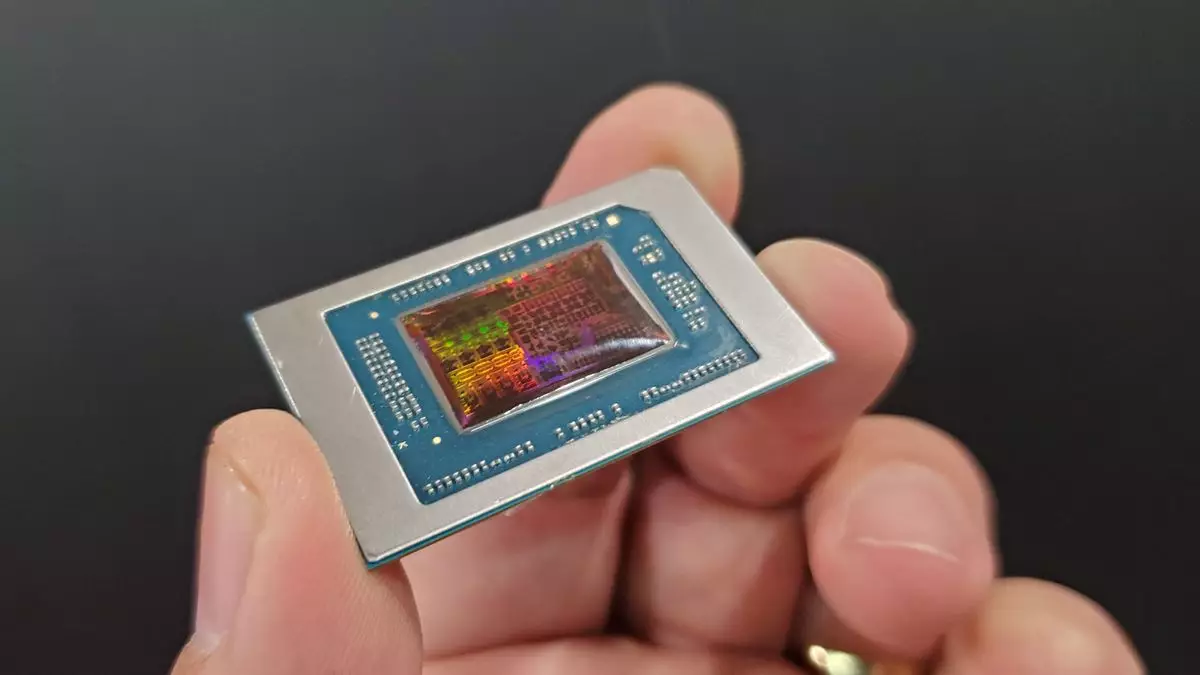AMD’s latest innovation, the Strix Point APU, is poised to revolutionize the way we think about performance in portable devices. Unlike traditional chips that struggle to balance power and efficiency, Strix Point is a compact powerhouse that has already made headlines for its performance in laptops and handheld PCs. Devices such as the Razer Blade 16 and the OneXPlayer OneXFly F1 Pro showcase the chip’s capabilities, proving that you can achieve remarkable performance in an increasingly mobile world. The growing inclination for high-performance portable computing demands solutions that are not only efficient but also versatile, and Strix Point appears to deliver on both fronts.
Desktop Prospects: A Customized Experience
Looking ahead, it seems AMD is set to extend the Strix Point’s reach into the desktop market, with the anticipated release of the Ryzen 9000G series. While it is expected to harness the same silicon that has performed so well in its portable counterparts, the potential inclusion of AI technologies promises to elevate its functionality even further. The integration of features like a Neural Processing Unit (NPU) capable of achieving 55 TOPS could redefine how we approach computing tasks, whether from gaming to heavy-duty workloads. The anticipated naming conventions, such as “Ryzen AI 9000G,” may indicate a future where intelligent computing is not just a feature but a fundamental aspect of the user experience.
Architectural Insights: Zen 5 and RDNA 3.5 Synergy
What lies under the hood is equally compelling. The Strix Point APU boasts up to 12 CPU cores that blend four full-fledged Zen 5 cores with eight compact Zen 5c cores. This arrangement promises to provide a well-rounded performance that excels in multi-threaded applications while maintaining efficiency for lighter tasks. Furthermore, with 16 RDNA 3.5 graphic compute units, it ensures that gaming and content creation do not become bottlenecked by graphical limitations. The current Ryzen 8000G series already demonstrates the viability of AMD’s architecture, paving the way for the upcoming Strix variant. However, the promise of higher clock speeds when deployed in a desktop configuration could significantly enhance performance, creating a benchmark that could compel users to reconsider their computing choices.
Compact Powerhouses: Ideal for Mini PCs
The rise of mini PCs has created a niche that Strix Point is uniquely equipped to fill. Compact systems that require powerful performance without excess bulk are increasingly popular, exemplified by models like the Ayaneo Retro Mini PC AM01S. These setups thrive on the balance of performance and size, making Strix Point an ideal candidate for deployment in these environments. Although Strix Point might not replace high-end discrete GPU and CPU setups for hardcore gamers, it stands out as a formidable all-rounder for everyday uses. Its ability to integrate into existing AM5 sockets means it will cater to a broad spectrum of computing needs with relative ease.
Affordability and Accessibility: A Bright Future Ahead
As AMD gears up for the Strix Point’s desktop debut, speculation around its pricing has sparked considerable interest. Mobile chips often carry a premium, so the potential for a desktop variant to offer comparable performance at a lower price could democratize access to high-performance computing in mini PCs. It presents an opportunity for consumers seeking powerful yet economical solutions for their computing needs. The landscape of computing is ever-evolving, and as AMD prepares to roll out further details later this year, it will be exciting to see how Strix Point reshapes perceptions of what compact computing can achieve.
The anticipation surrounding AMD’s Strix Point APU embodies the adventurous spirit of innovation. With a focus on making advanced performance accessible in mobile configurations, AMD is setting itself apart in a crowded technological landscape. The emphasis on both intelligent processing and efficient design is likely to attract users ranging from casual gamers to productivity-focused professionals. In this way, Strix Point symbolizes not just a step forward for AMD, but a leap for all those who dare to envision the future of personal computing.


Leave a Reply